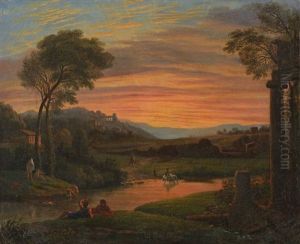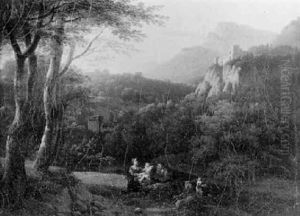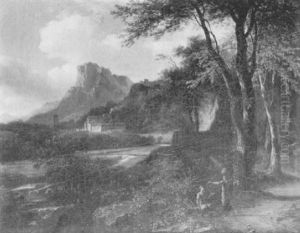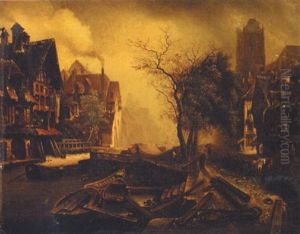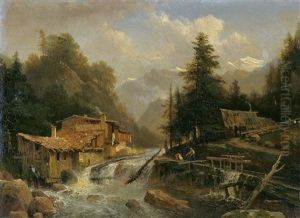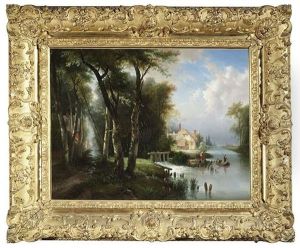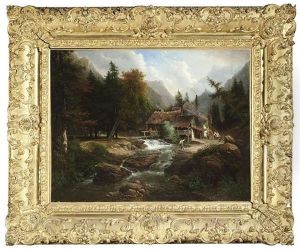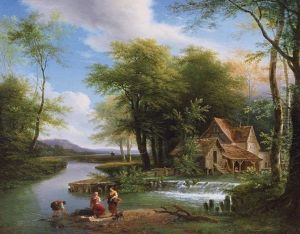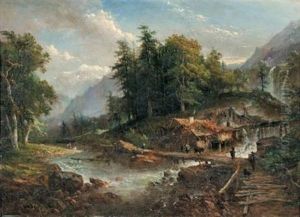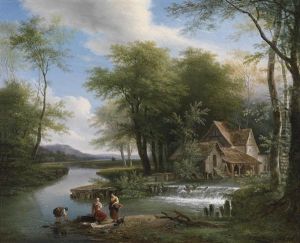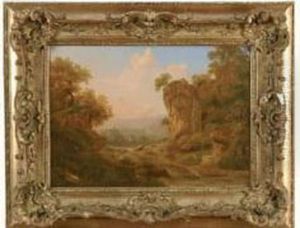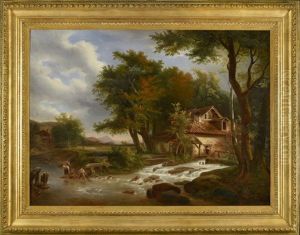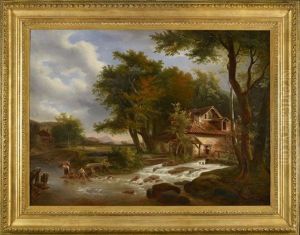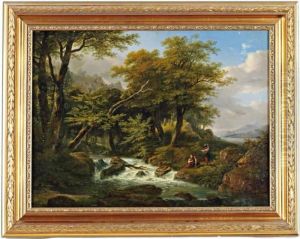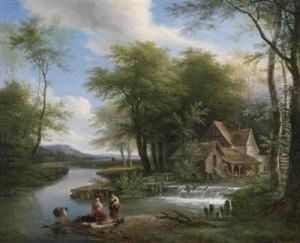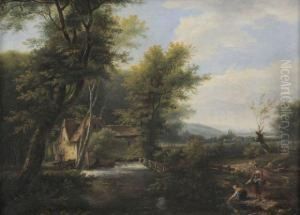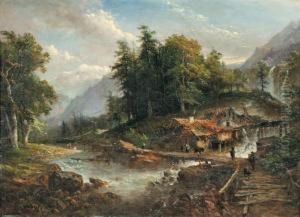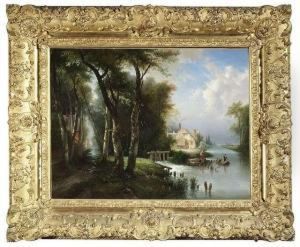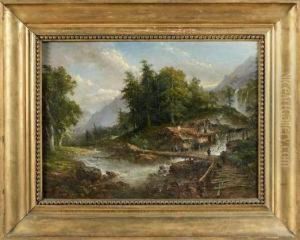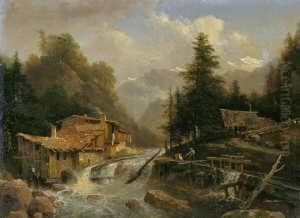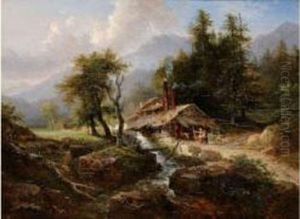Louis Etienne Watelet Paintings
Louis Etienne Watelet, a relatively less-known figure in the art world, was a French engraver and painter born in 1780. His artistic journey is not widely documented, and he is often overshadowed by more prominent artists of his time. However, his contributions to the arts, particularly in the field of engraving, do hold significance for those who study French art of the 19th century.
Watelet was trained in the traditional techniques of engraving, which involve incising a design onto a hard surface, such as metal, to produce images. This technique was crucial for the reproduction of artworks and the dissemination of visual culture before the advent of photographic processes. His works likely included reproductions of famous paintings, as well as original compositions. Engravers like Watelet played a vital role in the art ecosystem, bridging the gap between artists and the public.
Throughout his career, Watelet adapted to the changing art market and societal shifts that occurred during his lifetime, including the aftermath of the French Revolution and the rise of the Napoleonic era. His life spanned the transition from the neoclassical style that dominated the late 18th century to the emergence of romanticism in the 19th century.
Despite the lack of extensive records on Watelet's life and work, it is clear that he was part of the broader movement of French engravers who contributed to the art world during a period of significant change. He passed away in 1866, having witnessed and participated in a dynamic period of European art history.
